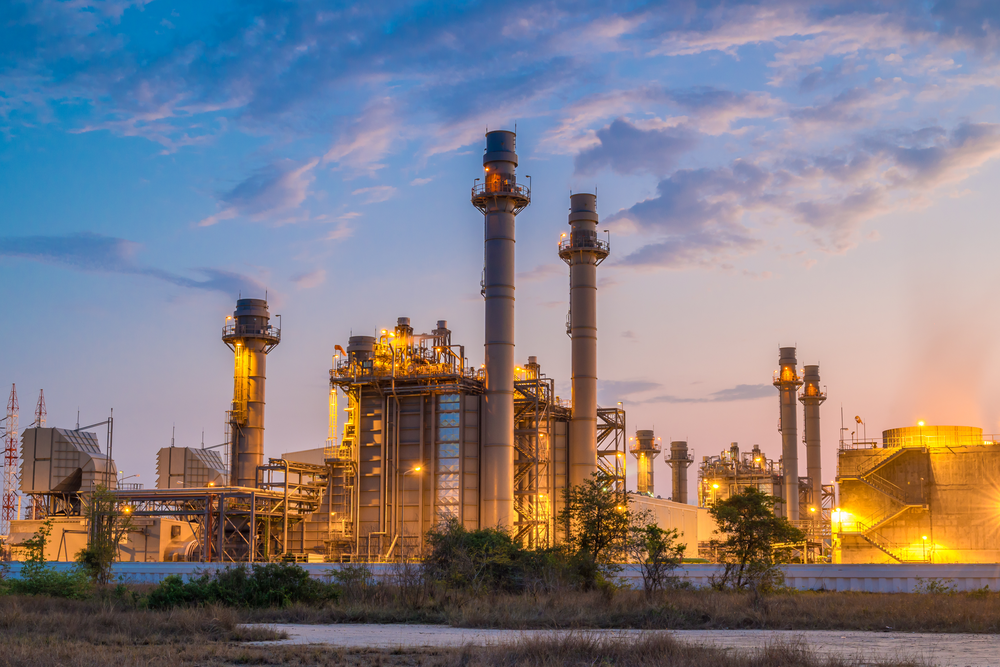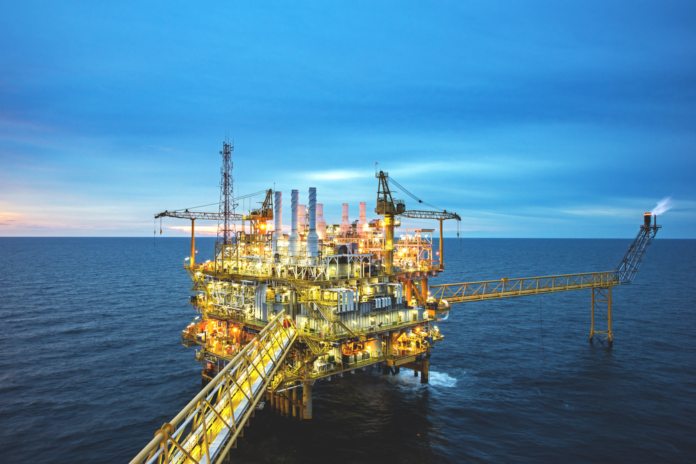The Southern Basin of Trinidad has produced more than three and a half (3 1/2) billion barrels of oil and an unquantifiable amount of gas from the more than thirteen thousand (13,000) wells which have been drilled both onshore as well as in the offshore West Coast acreage. This basin is also noted for having a world-class Cretaceous petroleum source rock on par with any of the other hydrocarbon major producing countries. So that the question today is “Do we have any future in the oil and gas business as it relates to exploration and production for significant volumes of new resources?”
I say unashamedly “YES”. Am I saying “YES” on a hope and a prayer. NO!! I have based my response on the basis of years of experience and knowledge of this basin over the last thirty-five years on land and the West Coast of Trinidad. It is widely accepted that it is madness to expect different results by doing the same things repeatedly. We are not going to find the next billion barrels of new oil and Tcf’s of gas in this basin with the traditional mindset and paradigm. So, what am I seeing now that has not been explored before in the Southern Basin of Trinidad? Shale oil and shale gas reservoirs, tight oil and gas reservoirs, low resistivity pay, thin-bed reservoirs, deep (>10,000ft) reservoirs, older reservoirs (Lower Cruse and older), stratigraphically trapped reservoirs, unconventional reservoirs, coal bed methane, and lignite.

I acknowledge that the big easy oil exploration targets have been found by the plethora of fantastic and very knowledgeable explorers on whose shoulders I stand today. We used to be told that the process of finding oil starts with finding the big bumps, the large anticlines and drill at the highest point as your first exploration well. But I was always intrigued in my early years with the Fyzabad Syncline wells. These wells are located in the middle of a syncline downdip of the Fyzabad Field and separated from those wells by a number of completely wet wells. HUH! What would have prompted a geoscientist to drill a well there??? Initially, I believe they were trying to extend the hydrocarbon column down the flank of the anticline in drilling their appraisal wells. I have been directly involved in several exploration wells and have reviewed a large percentage of the already drilled exploration wells. Geology has always intrigued me and I love the thought process applied by the different disciplines employed by our geoscientists.
I love a challenge and I love solving complex issues. It has always struck my curiosity of the number of times while drilling several exploration and appraisal wells that we experienced oil and gas shows, oil over the shaker, extended intervals with mud gas cutting, etc., only to be shocked by the log apparently showing that there is an absence of hydrocarbon filled sand reservoirs with the expected high resistivity. The trainline looking gamma ray and resistivity logs. Does anyone remember those wells with sometimes thick sands with high resistivity’s and the sick sour feelings we got when we saw the porosity log, crossover!!! GAS!!! Sometimes there were fits of expletives and figure pointing and the feeling of abject failure. Think about the four (4) recent Touchstone discoveries; Coho, Chinook, Cascadura and Cascadura Deep; where their Competent Person’s Report has confirmed about 500 Bcf reserves with a potential resource base of 1.5 Tcf of gas. Those new discoveries were drilled by several old exploration wells but not recognized as resources at that time.
Here I make a clear distinction between events that indicate pore pressure changes such as bad or crooked hole, shale breakouts, tight pull, etc. as opposed to other events which indicate productivity, a source of hydrocarbon influx, or a potential producing zone. The ability of a matrix to deliver fluids, be it oil and/or gas. I often reflect on an editorial in the Trinidad Guardian in 1988 about a significant oil discovery offshore in the West Coast of Trinidad with over 250 feet of oilsand which was going to significantly transform the economy of Trinidad and Tobago. Whatever became of that potentially massive discovery which was drilled to about 16,000ft? Now think about the recent discoveries by Exxon and Apache in Guyana and Suriname in excess of eight (8) billion barrels of reserves? Not resources but reserves.

There is a huge distinction between reserves and potential resources which a lot of persons don’t seem to understand. Resources refers to the total volume of hydrocarbon stored within the matrix whilst reserves generally means the total amount of hydrocarbon which has identified as being economically producible. Potential resources theorize from available data resources which could be found but not yet discovered. All those mouthwatering discoveries in Guyana and Suriname have been found in deep reservoir below 10,00ft predominantly in the geologically older Pre-Lower Cruse Horizons. Did God forget to fill deep old horizons in Trinidad when the shallower horizons were being filled?? I say “Surely not!!” It has always intrigued me about the dichotomy of the produced hydrocarbon liquids from the “same” horizons as you move spatially. I am speaking about parameters such as API, viscosity, wax and asphaltene content and so on. There are many surprises that have caused us to infer many possible solutions; prime amongst them being, “if in doubt put a fault”.
It is and has always been easier to explain away a problem than to pontificate on possible solutions which may not be popular or easily understood. We are often times blinded by our biases and bound by the breadth of our experiences or knowledge. I would dare to say that the influence of stratigraphy plays a very significant role in trapping hydrocarbons in deeper than that which was traditionally assumed or theorized. It has been estimated that more than fifty percent of the reserves found in Guyana are stratigraphically trapped. That is amazing. The fact that someone has not yet experienced something does not mean that it does not exist or that it is not possible. The Earth was “known” to be flat centuries ago and we now take it for granted that it is kind of round with some bulging at the poles. Even when modern seismic cannot see such faults, we then say that those faults are “sub-seismic”. Some explorers around the world are successfully producing coal bed methane and we are loathed at shooting a lignite zone in our wells. Ask the difficult questions, “is a coal bed in England so different from a lignite zone in Trinidad?”.
On the topic of productivity, does anyone remember testing a zone or zones in an appraisal or exploration well with some beautiful looking or interesting-looking oil sands, and the sometimes unexplainable poor production from said zone/s? Why? We sometimes saw unusually large pressure drawdowns. Could it have been due to produced fluid nuances such as insitu wax and asphaltene precipitation or significant permeability reduction due to fluid incompatibility because of precipitation. How many wells have we damaged because of fluid incompatibility between well control fluids and connate water? I have seen a number of instances where the clean filtered heavy brines have contributed to precipitate-induced impairment and the pressure transient analysis which showed no skin damage. Remember those days when we used to wash perforations with saltwater. Tests have been done which proved that some clean brines as well as seawater are incompatible with various connate waters. Do we really know the true permeability of our matrices?? These cases of potential permeability impairment can even occur in zones that do not produce water, hence the constant emphasis on connate water. We need to constantly question of basics.

What is the productivity of our source rocks?? We take it for granted that we have a world class hydrocarbon source rock, so if other world-class basins can produce economic oil and gas from their source rocks, why can’t we?? The first quartile oil-producing companies are able to produce thousands of barrels a day and millions of cubic feet of gas from their shale wells. We must be able to build on their experiences and coax all that we get from all possible sources in our basin. We don’ have to reinvent the wheel. Let’s use the knowledge sharing from the opportunities available through the SPE to harness that knowledge and cutting-edge technologies to innovate.
In January 2021, Ian Ivey in a response to a recent LinkedIn post by Natalie Dookie, Caribbean Business Development & Market Research Expert I Caribbean Technical Business Editor and Corporate Communication Specialist, was quoted as saying the following, “A dangerous distraction from where the focus should be. Fossil fuels are yesterday’s business. Pursuing oil and gas will reduce that future fitness and become a curse as it has in many other countries.” I therefore challenge you, the young professionals, to pursue knowledge with a passion. Use your networks to share and gain new insights.
Get together in interdisciplinary teams and seek solutions. I distinctly remember the case of a petrophysicist from Texaco getting their external reserves auditors to increase a field’s reserves by about fifteen million barrels by proving that the connate water saturation was 5% lower than their initial prognosis. It seems simple, but it can impact whether an exploration zone resource is considered as reserves. Go and review all those old exploration and appraisal wells in and around your fields. Review the geological and drilling files, IADC reports and have a deep look at those old logs. You may be surprised at how much we may have missed over the years and you can become the element of change. There is still significant volumes of oil and gas to be found and you are the ones to find it or we may risk becoming redundant in our basin. Time is a crucial factor in the search for new hydrocarbon reserves in Trinidad and Tobago.
Last year, 2020, BP theorized that peak oil demand could occur by 2030. In a major shift, the international major said that peak demand may have already happened and in January 2021, Shell has signed an agreement to acquire Ubitricity, a leading EV on-street charging provider, in its latest step to support drivers making the switch to lower-carbon transport. Do you know these company names, Nikola, Kandi, Nio, Bus, Fisker, Xpeng, Workhorse, Karma, Lucid, Faraday, Venturi? They may be household names within five years. Time is against us with the gallop of the modern world towards “green energy”.
“A bird in the hand is worth more than two birds in the bush.” Trinidad’s next billion barrels of new hydrocarbon production may just be a well away. Reach out and embrace our future. The discovery of a billion barrels of new hydrocarbon resources in the next eight years may not be as valuable as the discovery of a fifty (50) million-barrel reserves in 202
By Winstay Lewis (Director at BTSL Geo Services Limited)



















